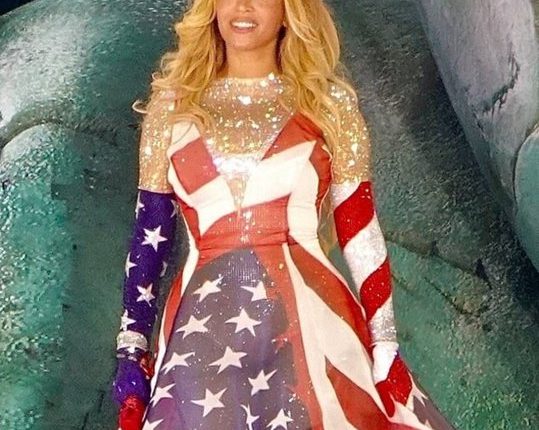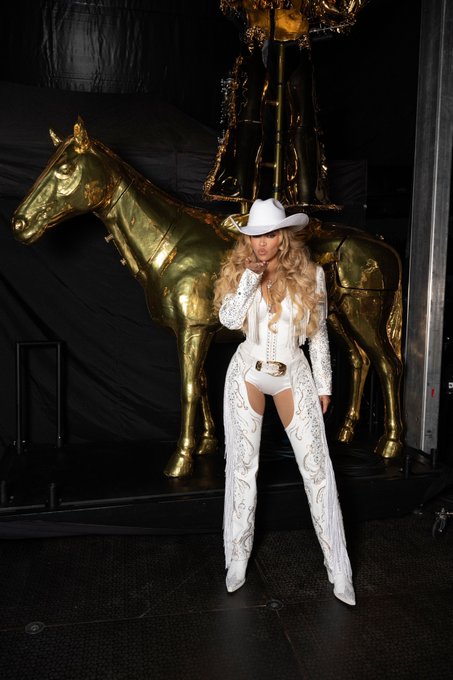- Why Beyoncé Sings the US National Anthem on Cowboy Carter Tour: Beyoncé’s national anthem performance is inspired by Jimi Hendrix’s protest at Woodstock, turning the song into a critique of American ideals versus reality.
- The anthem’s placement, followed by “Freedom,” highlights the ongoing struggle for liberty and equality in the US.
- The Cowboy Carter Tour reclaims American symbols and country music’s Black roots, challenging historical exclusion.
- Beyoncé’s show features diverse performers, making a statement about inclusion and the evolving face of America.
- The tour is both a celebration and a critique, urging audiences to reconsider what it means to be American today.
Beyoncé’s Cowboy Carter Tour isn’t just a concert-it’s a cultural event that’s sparking heated debates and powerful conversations. When Queen Bey opened her tour by singing the US national anthem, fans and critics alike were left asking: why would a superstar known for bold statements and genre-bending music choose to belt out “The Star-Spangled Banner” at a time of national division? The answer is layered, deeply symbolic, and quintessentially Beyoncé.

The National Anthem: A Surprising Choice That Sparked Debate
For many, hearing Beyoncé sing the national anthem at the start of her Cowboy Carter Tour was unexpected. The move drew both applause and criticism. Some fans saw it as a patriotic gesture, while others accused her of being out of touch given the current political climate, with ongoing debates about immigration and anti-trans legislation. But those quick judgments missed the deeper context: Beyoncé wasn’t simply performing the anthem-she was making a statement that demanded attention.
Tina Knowles about Beyoncé singing the National Anthem at the COWBOY CARTER TOUR
“How clever is this for those of you that are clever enough to understand the messaging here. She sang the first part of the national anthem but she left off “for free and the brave “and added “you… pic.twitter.com/FouOQL9jkg
— Beyoncé Press. (@beyoncepress) May 1, 2025
The Powerful Symbolism Behind Beyoncé’s Rendition
What many missed is that Beyoncé’s version of the national anthem is modeled after Jimi Hendrix’s legendary performance at Woodstock in 1969. Hendrix’s rendition was not a straightforward tribute; it was a protest, delivered in the aftermath of Martin Luther King Jr.’s assassination, at a time when America was grappling with its identity and values. By channeling Hendrix, Beyoncé turns the anthem into a critique-highlighting the gap between America’s ideals and its reality.
Immediately after the anthem, she transitions into her song “Freedom.” This sequence is no accident: it juxtaposes the anthem’s promise of “land of the free” with a direct question-“freedom, where are you?” This isn’t blind patriotism; it’s a pointed critique, a call to reflect on who truly enjoys liberty in America today.
Reclaiming American Identity on Stage
Beyoncé’s Cowboy Carter Tour is awash with American iconography-flags, cowboy hats, and Western motifs-but it’s all reframed through her perspective. She honors the Black roots of country music, projecting images of trailblazers like Linda Martell and wearing costumes that blend traditional Western style with high fashion. The show’s message is clear: American identity is not monolithic, and Black artists have always been part of the country’s musical and cultural fabric.
Visually, Beyoncé casts herself as both an “outsider” and a conqueror in a Wild West setting, symbolizing her journey in a genre and industry that has often excluded her. By the end of the show, she triumphs over these barriers, asserting her right to belong without seeking anyone’s permission.
A Broader Statement: Inclusion and Critique
Beyond the music, the Cowboy Carter Tour stands out for its inclusive cast, featuring trans and nonbinary performers of all backgrounds. Beyoncé uses her platform not just to critique the government but to celebrate the diversity of American citizens, challenging stereotypes about what America looks like and who gets to claim its symbols.
Her setlist and visuals serve as both a love letter and a challenge to America-embracing its complexity, acknowledging its flaws, and demanding a broader, more inclusive vision of patriotism.
Don’t Miss | Why Taylor Swift and Travis Kelce Skipped the 2025 Met Gala: The Real Story
Last Updated on May 6, 2025 by 247 News Around The World












